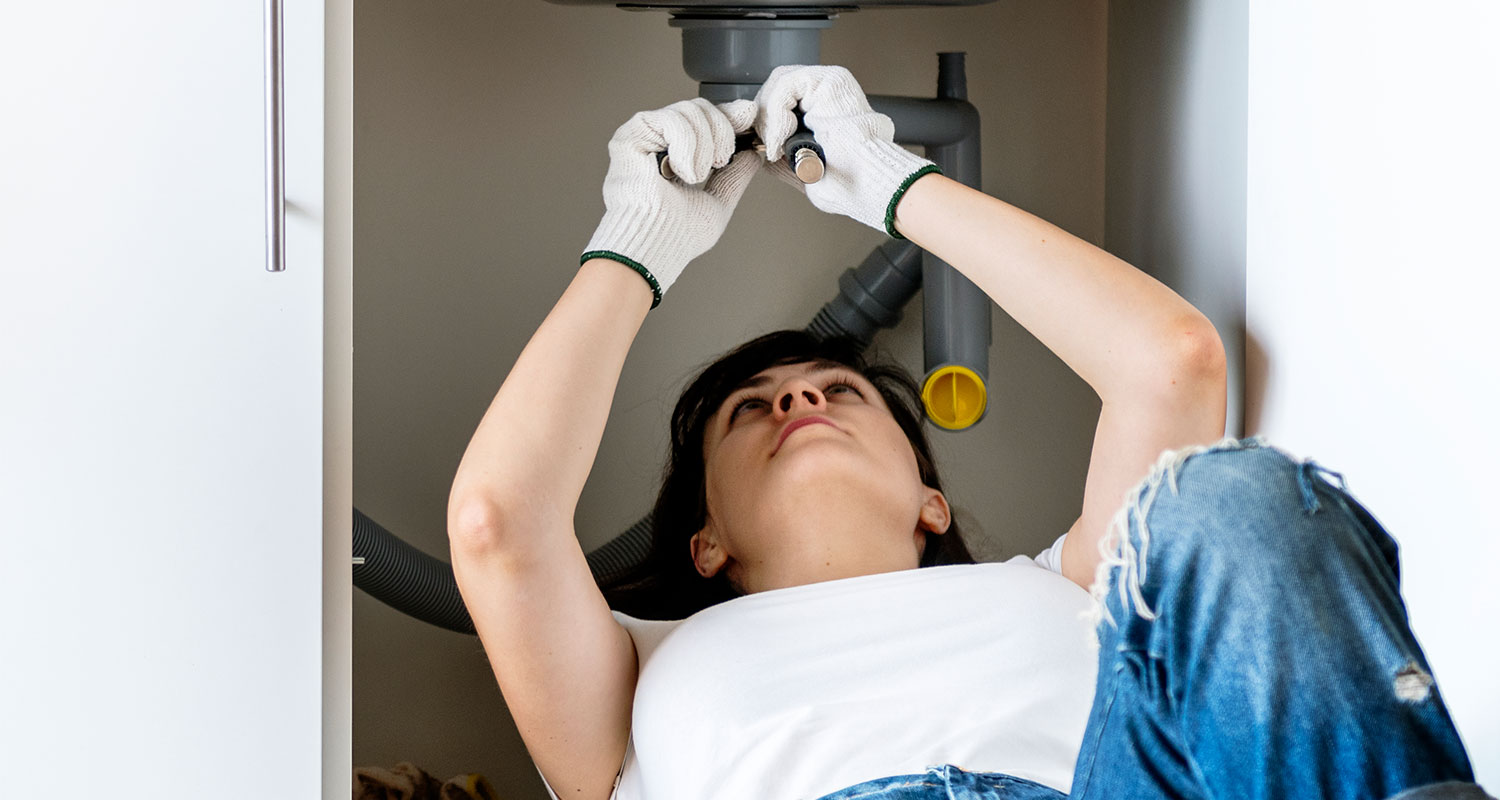If you’re wondering ‘can plumbers putty stop a leak,’ the answer is yes, but with some limitations. Plumber’s putty is great for sealing minor leaks in plumbing fixtures like sinks and faucets but isn’t suitable for high-pressure situations or plastic threaded connections. Read on to learn when and how to use it effectively.
Key Takeaways
- Plumber’s putty is great for sealing minor leaks in plumbing fixtures but has limitations in high-pressure or plastic-threaded situations.
- Proper surface preparation is important for applying plumber’s putty; ensure surfaces are clean and dry for the best seal.
- Using the right amount of plumber’s putty and avoiding over-tightening fixtures helps maintain effective seals and prevent leaks.
Understanding Plumber’s Putty and Its Uses
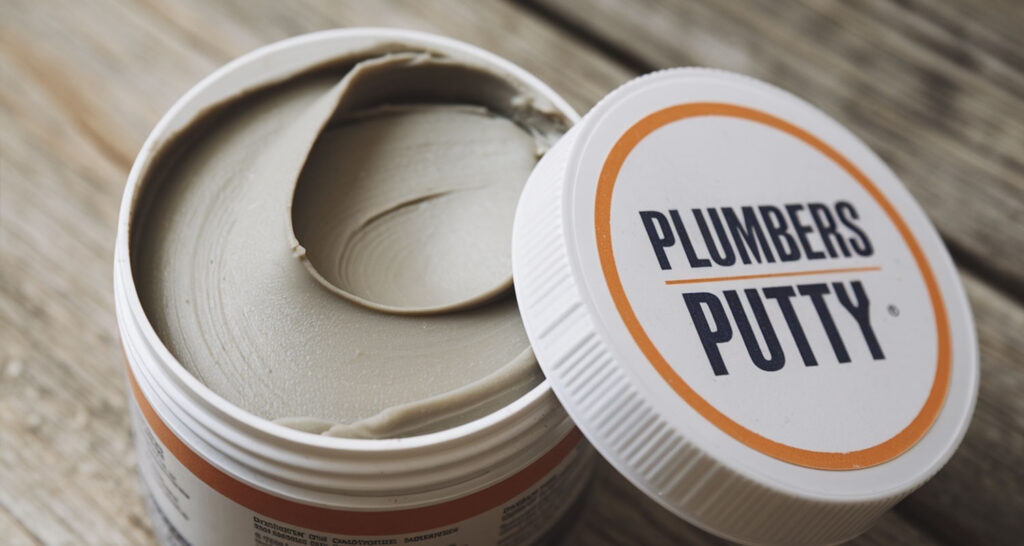
Plumber’s putty is a versatile material frequently used in plumbing to create watertight seals between rigid surfaces. Whether you’re setting a faucet, installing a sink basket strainer, or sealing a shower drain, plumber’s putty is a reliable choice. Its primary function is to prevent water from leaking between surfaces, ensuring that your plumbing system remains leak-free and efficient.
The beauty of plumber’s putty lies in its simplicity and effectiveness. Unlike other sealants that require cure time or additional tools, applying plumber’s putty is an easy to use product. Its malleable nature allows for easy application and adjustments, making it a go-to for many plumbing tasks.
However, understanding its key characteristics will help you appreciate its utility.
Key Characteristics of Plumber’s Putty
Plumber putty is designed to be pliable and easy to mold, making it a user-friendly choice for various plumbing applications. Its soft, workable nature ensures that it can be easily shaped to fit the contours of the surfaces being sealed. This clay-like compound doesn’t require additional tools for application, which sets it apart from other sealants like siliconized caulk. If you need more plumber’s putty, it’s readily available for your plumbing needs.
One of the standout features of plumber’s putty is that plumber’s putty remains soft over time, allowing for easy adjustments even after the initial application. This flexibility is particularly useful in plumbing scenarios where minor adjustments might stay soft and be easily modified.
However, exposure to air can cause plumber’s putty to harden and become brittle, so it’s crucial to store unused putty properly to maintain its pliability.
Can Plumbers Putty Stop a Leak?
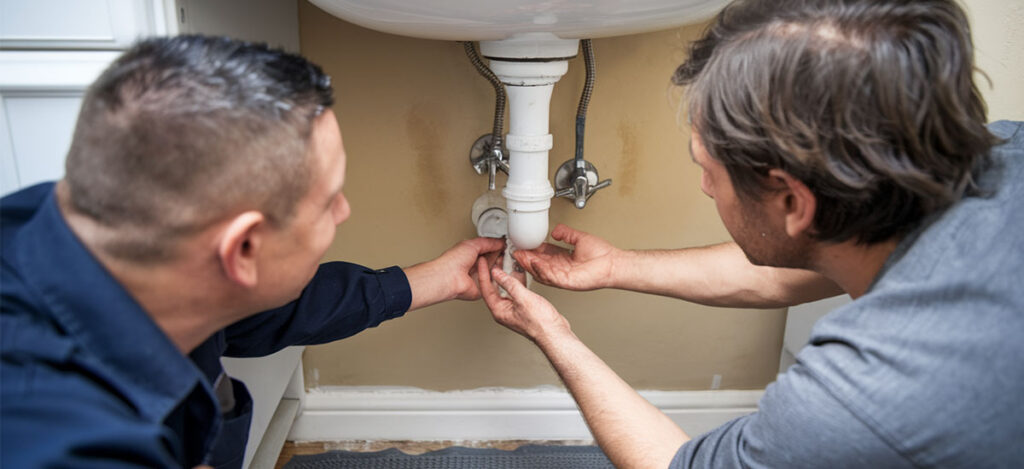
When it comes to stopping leaks, plumber’s putty can be a reliable solution, but it’s important to understand its limitations. Plumber’s putty is excellent for preventing leaks in plumbing fixtures where it can create a watertight seal between rigid surfaces. It is commonly used in situations like sealing sink drains, faucet bases, and shower drains. However, for more significant leaks or high-pressure situations, it’s advisable to consult a licensed plumber.
The key is to use plumber’s putty for the right applications. It’s effective for minor leaks and fixtures but might not be suitable for high-pressure or plastic threaded connections. For these scenarios, other sealants like thread sealant or siliconized caulk might be more appropriate. Understanding where plumber’s putty excels can help you make the right choice for your plumbing needs.
Situations Where Plumber’s Putty is Effective
Plumber’s putty shines in specific plumbing applications, particularly where it is used to seal joints and plumbing fixture. Common uses include setting faucets, sealing sink basket strainers, securing shower drains, and ensuring a faucet base is properly installed. These are areas where a watertight seal is crucial to prevent water from seeping through and causing damage.
For plumber’s putty to be effective, the surfaces must be clean and dry. Contaminants like dirt, grease, or old putty can hinder its adhesion. In colder conditions, allowing the putty to sit for about 10 minutes before finalizing the fit can ensure a more secure seal.
These guidelines will help you get the most out of plumber’s putty in your plumbing projects.
Limitations of Using Plumber’s Putty for Leaks
While plumber’s putty is versatile, it does have its limitations. It is not suitable for high-pressure applications or plastic threads, as its formulation often includes oils that can affect the compatibility with certain plastics. Using plumber’s putty in these scenarios can lead to failure and leaks.
Additionally, plumber’s putty is not recommended for use on porous materials or in situations where it will come into contact with drinking water. It cannot withstand the high pressures often found in these applications, which limits its use in certain plumbing scenarios. Understanding these limitations will help you choose the right sealant for your specific needs.
Step-by-Step Guide to Applying Plumber’s Putty
Applying plumber’s putty is a straightforward process that requires a few essential tools and materials. You’ll need the putty itself, a putty knife, and cleaning cloths to wipe away any excess putty. Be sure to use plumber’s putty for the best results.
This step-by-step guide will walk you through surface preparation, application, and testing the seal to ensure a watertight fit.
Surface Preparation
Before you apply plumber’s putty, it’s crucial to prepare the surfaces properly. Clean the area thoroughly to ensure a tight seal. Surfaces should be free from hardened putty, dirt, wax, oil, and grease. Failing to do so can hinder the effectiveness of the putty seal.
Using a scraper can assist in removing old putty and debris from the surfaces. A damp cloth can help wipe clean both surfaces and tools during and after the application. Keeping your hands clean is also essential to avoid contaminating the plumber’s putty.
Thorough preparation is crucial for a durable and effective seal.
Application Process
Once the surfaces are clean, knead the plumber’s putty to preserve its properties and ensure a strong adhesive quality. Shape the putty into a rope that matches the circumference of the flange. Roll the putty into a long, thin shape before placing it around the drain or fixture.
Press the item firmly to spread the putty evenly and create a seal. It’s essential to avoid layering the putty; a single layer should be applied without gaps. Use a putty knife to remove any excess putty and ensure a clean application. This method ensures a reliable seal in non-pressurized areas like sinks and faucet connections.
Testing the Seal
After applying plumber’s putty, allow the joint to settle before testing for leaks. This settling period ensures that the putty has formed a proper seal. To check the seal’s effectiveness, inspect the area for any moisture seeping out.
Conduct a thorough inspection to ensure there are no leaks after the installation process. This step is crucial to confirm that the putty has created a watertight seal and will prevent future leaks. These steps will guide you towards a successful application of plumber’s putty.
Common Mistakes to Avoid When Using Plumber’s Putty
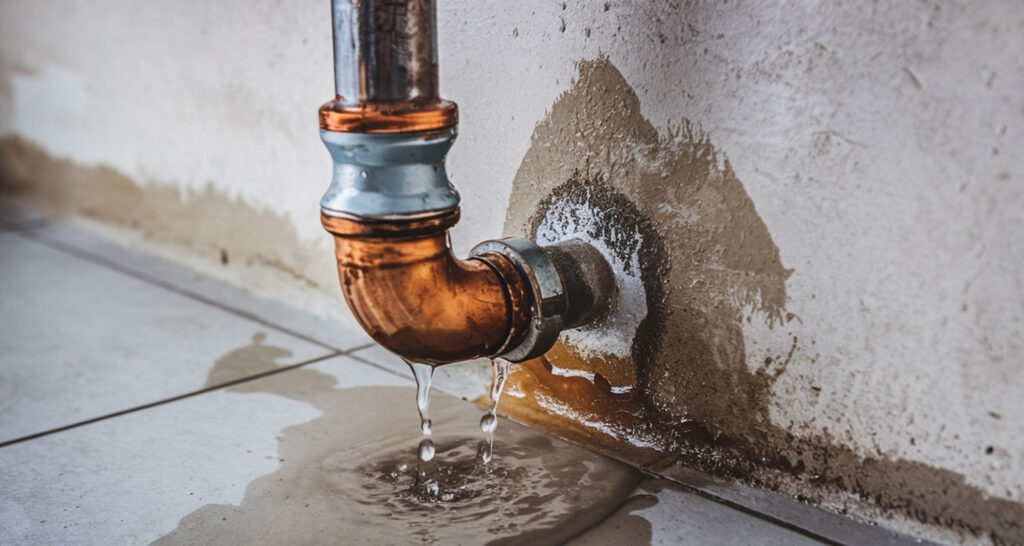
Using plumber’s putty effectively requires avoiding common mistakes that can lead to ineffective seals and product failure. One frequent error is using an excessive amount of putty, which can escape from the edges when compressed, leading to failure and leakage.
Applying only the necessary amount is crucial for creating a reliable seal.
Over-Tightening Fixtures
Over-tightening fixtures can compromise the effectiveness of plumber’s putty. Excessive tightening can stress the putty, causing it to lose its sealing properties and leading to leaks. It’s important to follow manufacturer instructions to properly secure fixtures without over-tightening.
To maintain the seal’s integrity and prevent leaks, avoid over-tightening. This ensures the plumber’s putty works effectively and keeps your fixtures leak-free.
Using on Incorrect Surfaces
Plumber’s putty is not suitable for certain materials like plastic materials and porous surfaces. Using it on plastic surfaces can damage them, as the putty may not adhere properly and can degrade the material over time.
For porous materials, plumber’s putty is ineffective because it can absorb into the surface and fail to create a good seal. Alternatives like silicone caulk or specific adhesives designed to stain porous materials are better suited for sealing on unsuitable surfaces. Additionally, plumber’s putty is not recommended for use on porous material surfaces.
Tools and Materials Needed for Plumber’s Putty Application
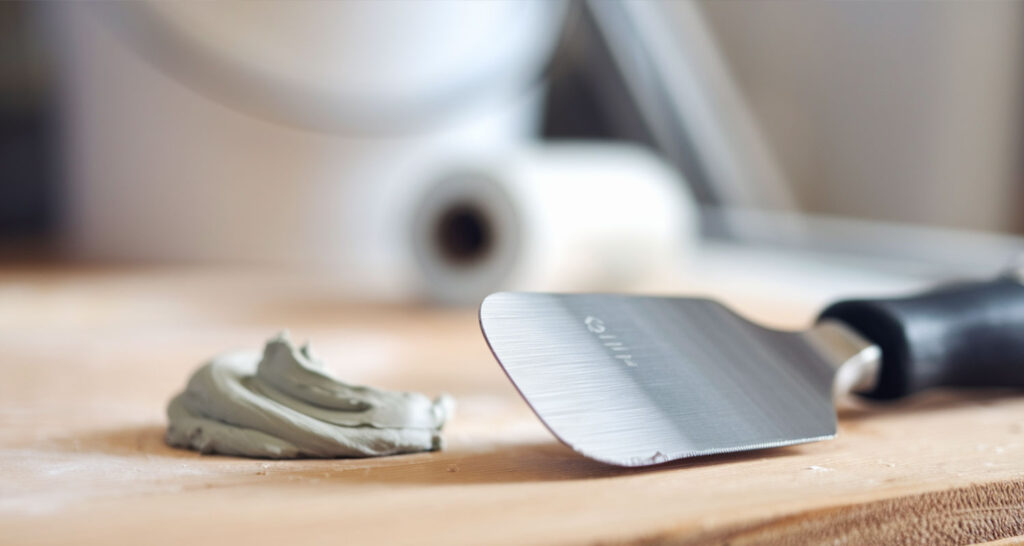
The right tools and materials are necessary for effective application of plumber’s putty. A putty knife is crucial for applying and removing excess putty effectively, ensuring a clean and reliable seal. Clean hands and a damp cloth are also necessary to prevent contamination and ensure a proper application.
Must-Have Tools
Using the right tools is crucial for the effective application of plumber’s putty. Essential tools include clean hands and a putty knife. Clean hands are necessary to prevent contamination of the putty during application, ensuring that no dirt or oils interfere with the adhesion process.
A damp cloth can be used to keep surfaces clean and help ensure a proper application of plumber’s putty. These items might seem basic, but they are your best bet for achieving a flawless seal.
Additional Useful Items
A tool bag is highly recommended to keep all necessary items organized for your plumbing projects. It helps keep your tools and materials together, making it easier to transport and access them whenever needed. This organizational tool ensures that you have everything you need at hand, making the application process smoother and more efficient.
Maintenance and Longevity of Plumber’s Putty Seals
Maintaining the effectiveness of plumber’s putty seals involves regular inspections and proper storage of unused putty. Plumber’s putty can last for about two years if stored correctly. Regularly checking for cracks, pits, or changes in texture can indicate if the putty has expired and needs replacement.
Proper maintenance ensures that your plumber’s putty remains effective and your seals stay watertight.
Proper Storage of Unused Putty
To ensure plumber’s putty remains effective, store it in an airtight container in a cool, dark place away from sunlight. Unused plumber’s putty should always be stored in a sealed container to prevent it from hardening.
Adding a small amount of water before sealing the container can help maintain the putty’s pliability over time. Avoid exposing plumber’s putty to extreme temperatures, which can compromise its consistency and effectiveness.
Ensuring Durability
Proper maintenance and application practices are essential for ensuring long-lasting plumber’s putty seals. Ensure surfaces are thoroughly cleaned before applying plumber’s putty to achieve a better seal. Avoid over-tightening fixtures, as this can compromise the integrity of the seal created by plumber’s putty.
If using plumber’s putty in colder applications, wait 10 minutes after installation to ensure it’s properly secured. By following these practices, you can extend the durability of your plumber’s putty seals.
Safety Precautions When Using Plumber’s Putty
When using plumber’s putty, safety should be a top priority. Direct contact with plumber’s putty can lead to skin irritation, making it crucial to handle it carefully.
Proper safety measures allow for the effective and safe use of plumber’s putty.
Working in Well-Ventilated Areas
Using plumber’s putty in spaces with good airflow helps to dissipate any potentially harmful fumes. Proper ventilation is essential to minimize inhalation of these fumes and safeguard your health. Insufficient ventilation can increase the risk of inhaling harmful fumes released by plumber’s putty.
Good airflow while using plumber’s putty helps maintain a safe working environment.
Wearing Protective Gear
Wearing gloves while handling plumber’s putty is essential for avoiding skin irritation. Gloves effectively prevent skin irritation and maintain hygiene when handling plumber’s putty.
Wearing gloves protects your skin from irritation and ensures a clean application process. This simple precaution contributes to the safe and effective use of plumber’s putty.
Not sure what to do, Hire a professional plumbing company
If you’re unsure about handling minor leaks or applying plumber’s putty, hiring a professional plumbing company like Chambliss Plumbing can be a wise decision. Persistent leaks or drips, including a small leak or a water leak, can lead to significant damage if not addressed promptly, making it essential to consult a professional plumber.
A licensed plumber ensures repairs comply with current building codes and regulations, minimizing the risk of costly violations. Professional plumbers possess the necessary knowledge and tools to quickly locate and fix leaks, preventing further damage to the property.
Professional plumbing services can offer tailored solutions for unique property requirements, ensuring that specific plumbing challenges are addressed appropriately. Employing a professional plumber can enhance property value by ensuring a well-functioning plumbing system, which attracts prospective tenants and buyers.
Wrapping Things Up
In conclusion, plumber’s putty is a valuable tool for creating watertight seals in various plumbing applications. Understanding its characteristics and limitations can help you use it effectively to prevent leaks. Proper application, maintenance, and safety precautions are crucial for long-lasting results. When in doubt, hiring a professional plumber can ensure that your plumbing system remains reliable and efficient. By following these guidelines, you can confidently tackle minor leaks and keep your plumbing fixtures in top condition.
